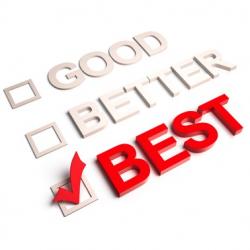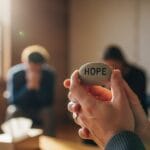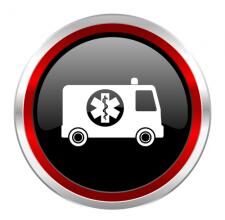 The dictionary defines best as “of the highest quality, excellence, or standing.” From this comes best practices, which Wikipedia defines as “a method or technique that has consistently shown results superior to those achieved with other means.” The definition continues, “a ‘best’ practice can evolve to become better as
The dictionary defines best as “of the highest quality, excellence, or standing.” From this comes best practices, which Wikipedia defines as “a method or technique that has consistently shown results superior to those achieved with other means.” The definition continues, “a ‘best’ practice can evolve to become better as
 The dictionary defines best as “of the highest quality, excellence, or standing.” From this comes best practices, which Wikipedia defines as “a method or technique that has consistently shown results superior to those achieved with other means.” The definition continues, “a ‘best’ practice can evolve to become better as improvements are discovered.” What happens to our drive for improvement when we hear a practice being referred to as best? I think there is a natural tendency to think only about the first part of the definition and assume that our work is done. Couple that with the fact that many things referred to as best practices are developed elsewhere and “shared” with us for us to “adopt.” Often these decisions are made near or at the top of our organizational hierarchies, and the challenge becomes one of implementation: “do what worked for them and it should solve our problems too.”
The dictionary defines best as “of the highest quality, excellence, or standing.” From this comes best practices, which Wikipedia defines as “a method or technique that has consistently shown results superior to those achieved with other means.” The definition continues, “a ‘best’ practice can evolve to become better as improvements are discovered.” What happens to our drive for improvement when we hear a practice being referred to as best? I think there is a natural tendency to think only about the first part of the definition and assume that our work is done. Couple that with the fact that many things referred to as best practices are developed elsewhere and “shared” with us for us to “adopt.” Often these decisions are made near or at the top of our organizational hierarchies, and the challenge becomes one of implementation: “do what worked for them and it should solve our problems too.”
I met a colleague this week that arrived at her current healthcare role via a pathway that brought her to Silicon Valley. She has been struck by the tendency for healthcare workers to look to their “superiors” for permission prior to trying something new. She stated that things were quite different in the IT world. People, recognizing situations in which improvements were needed, took the initiative to try to make changes and then inform their bosses about the results of those experiments. There was a culture of ongoing improvement that included and, in fact, relied on the idea that for many of our problems, we’re going to have to discover solutions that work for us.
I believe that our organizations and communities need a learning approach to improvement. We may learn that someone else’s best practice is exactly what we need, and then enthusiastically go about implementing it. We may find that we can improve that practice as “improvements are discovered” that the originators hadn’t found. Maybe those improvements are intimately intertwined in the relationships, processes, and culture of our particular organization/community. In that case the improvement works for us and won’t work for others. For this reason we may learn that what was a best practice for someone else actually isn’t useful for us, because the “superior results” were intimately intertwined with someone else’s relationships/processes/culture and are not transferable to ours. We may actually discover that there already exist superior results that work for us- our internal best practices, our positive deviants, whose practices our organization/community will embrace once they are able to discover them from their peers. And, finally, we may find that we have to create our own solutions through an iterative process of innovation, experimentation, and continuous learning.
There is a clear link with all of this and how leadership occurs. A focus on imported best practices is consistent with a traditional hierarchical leadership model, as “solutions” flow down into the organization from above, leaders providing both the vision of what needs to happen and how to do it. The learning approach requires what Plexus Institute Board member Mary Uhl-Bien, PhD calls complexity leadership. Formal leaders create the conditions for the emergent learning necessary so that those who own the work can make decisions most useful for them. They provide a general vision and acknowledge there is no clear path for getting there, enabling and supporting the multiple possible “hows” that may work in local contexts. For me, organizations embracing this approach to improvement have the potential to go beyond best practices and become truly best.
(healthcare best practices / shutterstock)








